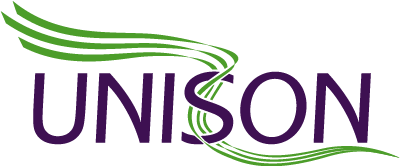An introduction to back pain
Most people suffer from back pain at some time in their life. Back pain is one of the biggest causes of work absences, accounting for more than 12 million days lost every year.
Most back pain is caused by sprains, strains, being out of condition and posture problems rather than spinal damage or other health conditions. Non-specific back pain can be split into two types:
- acute pain that lasts for less than six weeks;
- chronic pain that lasts for longer than six weeks.
Back injuries at work
There are many work-related causes of back injuries. Many UNISON members have jobs that involve a high risk of back pain, particularly in the areas of health and social care, portering and caretaking.
Activities with a high injury risk include:
- bending and twisting;
- heavy and/or repeated lifting;
- working for too long without breaks;
- using poor technique or too much force;
- uncomfortable working positions;
- adverse working conditions (hot, damp, cold or wet).
Your employer’s responsibilities
Your employer is responsible for preventing or minimising the risk of you suffering back injuries, particularly as a result of manually lifting or moving objects at work.
There are strict laws covering employers’ responsibilities and each employer should have a written policy as part of their safety policy.
Your employer is responsible for minimising the need for lifting or moving as part of your job, providing equipment if necessary, as well as training in manual handling techniques.
Where manual handling can’t be avoided, employers must do what they can to reduce the risk of injury “to the lowest level reasonably practicable”.
Your employer’s responsibilities extend to wherever you work, even if you work off-site or in a variety of locations.
Risk assessment and training
Your employer must also carry out “suitable and sufficient” health and safety risk assessments to make sure the measures they’re taking are adequate and meet legal requirements. Your employer must regularly review risk assessments and safety procedures.
Your employer must also train you to correctly use equipment and organise regular refresher sessions. Training should include:
- the dangers of back and spine injury;
- spotting and avoiding dangers;
- good handling and moving techniques;
- using handling and lifting equipment;
- capabilities and limitations;
- recording incidents or injuries.
Next steps for UNISON reps
Inspect the workplace every three months. You should also inspect the work environment whenever there is a change in working practises.
Encourage members to talk to you about workplace safety. You should encourage members to highlight their health and safety concerns including those related to back injuries and contact you when an accident or incident takes place.
Key facts
- Back pain is extremely common and causes a significant number of work absences, with most people suffering back pain at some point in their lives.
- Back pain is one of the most common reasons for absences from work – and long hours at a computer or at the wheel of a car can cause strain or injury.
- It’s easier to prevent back injuries than it is to cure them.
- If you are concerned about workplace hazards you should tell your UNISON health and safety rep.
FAQs
Back pain
-
How can I protect myself from injuring my back?
Prevention is better than cure. If you are required to lift heavy loads your employer should provide appropriate lifting equipment and training, so make sure you have the training and/or equipment when lifting and manual handling is unavoidable.
If you work in an office take regular breaks from your screen and make sure your workstation is set up properly.
-
I am being asked to use lifting equipment at work but I am not confident about using it. What should I do?
Ask your employer for training and contact your UNISON health and safety rep.
-
I injured my back at work – what should I do next?
See your GP if back pain prevents you from working and ask them to record the cause. If your injury happened because of poor equipment or other workplace hazard, tell your UNISON health and safety rep.
Stay as active as you can but don’t try to force your recovery because you could make the problem worse.
-
What responsibilities does my employer have to prevent back injuries in the workplace?
Your employer must take all steps possible to prevent or minimise the risk of injuries, including providing equipment and the training to use it properly.
Your employer must also carry out regular health and safety assessments to identify the possibility of injury.
-
What should I do if I notice a hazard at my workplace that could cause back injuries?
Speak to your employer first but also tell your UNISON health and safety representative or steward.

